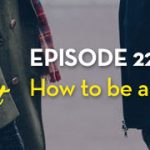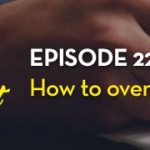Writers Block
Have you ever stared at a white piece of paper or an empty computer screen knowing that you should now be creating? Words should now be appearing in front of you like water flowing from a tap. It might be an essay, an assignment, report, thesis, or the latest crime thriller, but right now your mind is completely blank. We call this writer’s block. We have become creatively stuck. It’s as though there is nothing there. No thoughts, no ideas, no dreams, the creative cupboard is just empty. We need inspiration. We need to find our muse. Writers block is really just one facet of creative constipation. The creative channel has become blocked, clogged, there is no flow.
For Michael Angelo to reveal the statue of David from a block of marble he had to first hold the image of David in his creative mind. Had he not been able to see that image then nothing would have happened, he would not have even bothered to pick up his hammer and chisel and get to work. Or, Leonardo DaVinci taking up his brushes to paint the Mona Lisa. Or, indeed the creators of Stone Henge or the Pyramids. It all starts with an image. Before we can strike the first blow of the chisel, the first stroke of the brush, the first line with a pencil, the first letter with the pen or the first pressed computer key we need an image. We need to have some idea of our starting point though we may not be clear of the end point. The image is the direction in which our efforts will go.
Problem solving
For most people the expression of creativity is really them enacting their ability to solve problems, which, by the way, we all have. Problem solving comes in many forms.
We might consider the act of getting a man on the moon, a massive and concerted collective effort of creativity. From the image that it is possible, the understanding of the astronomy, the rocket, the fuel, the trajectory, the science, right down to the last nut and bolt are all the results of human creativity in action.
Can you make a cup of tea?
If the answer is ‘yes’ then consider your self a creative genius. The ability to make a cup of tea begins with an image. The image is turned into a creative process and the end result of which is a cup of tea. Sometimes your tea will be good and sometimes not so good depending on your ability to enact the creative process.
When we are unable to solve problems whether it is great art, music, science, literature, DIY, personal relationships, social equality, political union, or the ability to feed the world and live in peace we are suffering from ‘creative block’ we have become creatively constipated.
Overcoming creative constipation
Creativity is not a simple single event, it is not the simple expression of an image or idea, creativity is a seven stage process. Most people fail to be creative because at some point in the creative processes they are blocked. So, let’s have a look at the process.
1: Inspiration
A creative image is the urge, the desire to get creative and produce something, and it begins with feeling inspired. The key here is in the word ‘feeling’. You can feel inspiration but you can’t think inspiration. When we are inspired it is by an image that is generated internally or externally. The great orators, Martin Luther King, Churchill and even Hitler were able to share images so powerful that they inspired millions of people to act and even die in pursuit of the image. Advertising is about creating inspirational images of products that will seduce people to go and buy them. Whatever the endeavour the act of creativity begins with the image.
Action: If you are stuck and cannot find your muse or feel no inspiration take a break, stop doing what isn’t working, read, watch and listen but most importantly stop trying to force it. Most inspiration drops into your awareness, it pops out of the blue, it may present itself while we are in the shower or walking the dog. The trick is when inspiration calls do something about it, act. In action we activate the creative process, when we fail to act our creativity simply withers on the vine.
2: The Implications
Let’s assume that you have a clear image, you can feel the inspiration and feel ready to get going with it, now is the time to ask the question what effect will your creative endeavour have on you, on other people, on the world around you or even on the future of mankind. When Einstein created the maths that led to the splitting of the atom his image was one of limitless power for all. He did not consider the implications that his work would lead to the creation of the atomic bomb that was eventually dropped on Hiroshima and is the basis of the current stand off between the USA and North Korea. When we act creatively it has an effect large or small. What when enacted will your creative image have on others? The implications maybe all good and positive creating a win win with those around you. In most cases for someone to win there will be losers. If your image involves taking a job in the evening to raise some cash it may effect your partner or family. Many creative ideas fail at this point because the implications have not been truly considered.
Action: To ensure the free flow of your creativity check out the implications. Share your image with other people and see whether they have other ideas that may help you adapt it and maybe make it better or more effective. Most importantly if you share you image with those people that it will effect they may give you their support as well, your image may inspire them.
3: The plan
The next common point of failure is lack of planning. As the say “fail to plan and you plan to fail”. You have shaped your image and created the inspiration, you have considered the implications and effects on others, okay, so how are you going to do it what is the plan? Where will you do it? Do you need a particular space, a room, a desk, an office a factory? What equipment do you need? What systems do you need to run your image? Time to create your plan. If you struggle with planning try this.
Action: Forward basing.
This is best done in a large room, but you could use post-it notes on a table. At one end of the room Blu-tack some paper on the wall and write a statement of your current position/situation on it. At the other end of the room put up paper and write a statement about your goal, the fulfilment of the image or it might be the completion of the first stage, if you have a large project. Now, use the space between these two statements laying out pieces of paper that are the steps that need to be taken that will get you from where you are to where you need to be. This process may take sometime and even some days or weeks if the steps need some research or verification. Once you have a clear plan in place, remembering that it is not set in stone and can be adapted as needed, run a time line along the side wall. A time line indicates how long it will take to get from one wall to the other and at what point in the time line does each step need to be completed. Okay, now you have a plan.
4: Resourcing
Next point of failure is lack of resources. Often this is the money required to get the equipment, premises or for support while the project gets going. It may simply be that you need a computer and do not have the cash. Sometimes the greatest resource that we need is time. This may mean getting someone to look after the kids, reducing your working week to part time or simply making it clear to family and friends that you are working and do not want to be disturbed.
Action: List all the resources that you will need and at what stage in your plan you will need them. Consider how you can fund these resources. Are there people who can offer you help? If you need to approach a money source such as investors or a bank you will require to formalise your plan into a business plan. Many banks have kits to help you do this or local chambers of commerce can be helpful.
5: Testing
You have a clear image, you have worked through any implications of enacting it, the plan is clear and understood and is now fully resourced, time to check if it works. If your image is to be a writer start writing, if it is production do a test run, if it is as a performer do a performance. Whatever your image test you plan. Does it work?
Action: Make or enact your first creation, observe it, if necessary check it with other people, does it work? Often this is a good time to use focus groups and do the market research. This is the time when the testing can show the need to adjust the image, vary the plan, or take into account unseen implications or the need for extra funding or resources.
6: Time to get on with it
This bit of the creative process is sometimes termed ‘the vital energy’ that is needed to really make it happen. Up to this point the process has remained, in some ways, theoretical, now it is the real thing. Lots of people have fabulous ideas, ideas that could have really changed the world, they plan and play all kinds of games in preparation for the big event that never happens. This final push is the final stage in the creative process. It is the real enacting of the original image. For big projects it may be the final phase of staffing the production team and making the production work. For smaller projects just get on with it.
Action: Do it.
7: Congratulations
So here you are with the finished book, jumper, meal, widget or whatever, in your hands. You are now officially a creative genius. You have taken an inspired image right through the creative process to actual creation. Pat on the back time. Looking at what you have achieved you may now need to develop it and look at the second iteration.
Action: Okay, so now that you are officially a creative genius what is you next project?
If we could develop the clear inspirational image of peace and happiness perhaps we could create heaven on earth right now?
Take care and create your own happiness
Sean x



Trackbacks & Pingbacks
[…] Here’s Sean’s blog post for the topic, well worth a read […]
Leave a Reply
Want to join the discussion?Feel free to contribute!